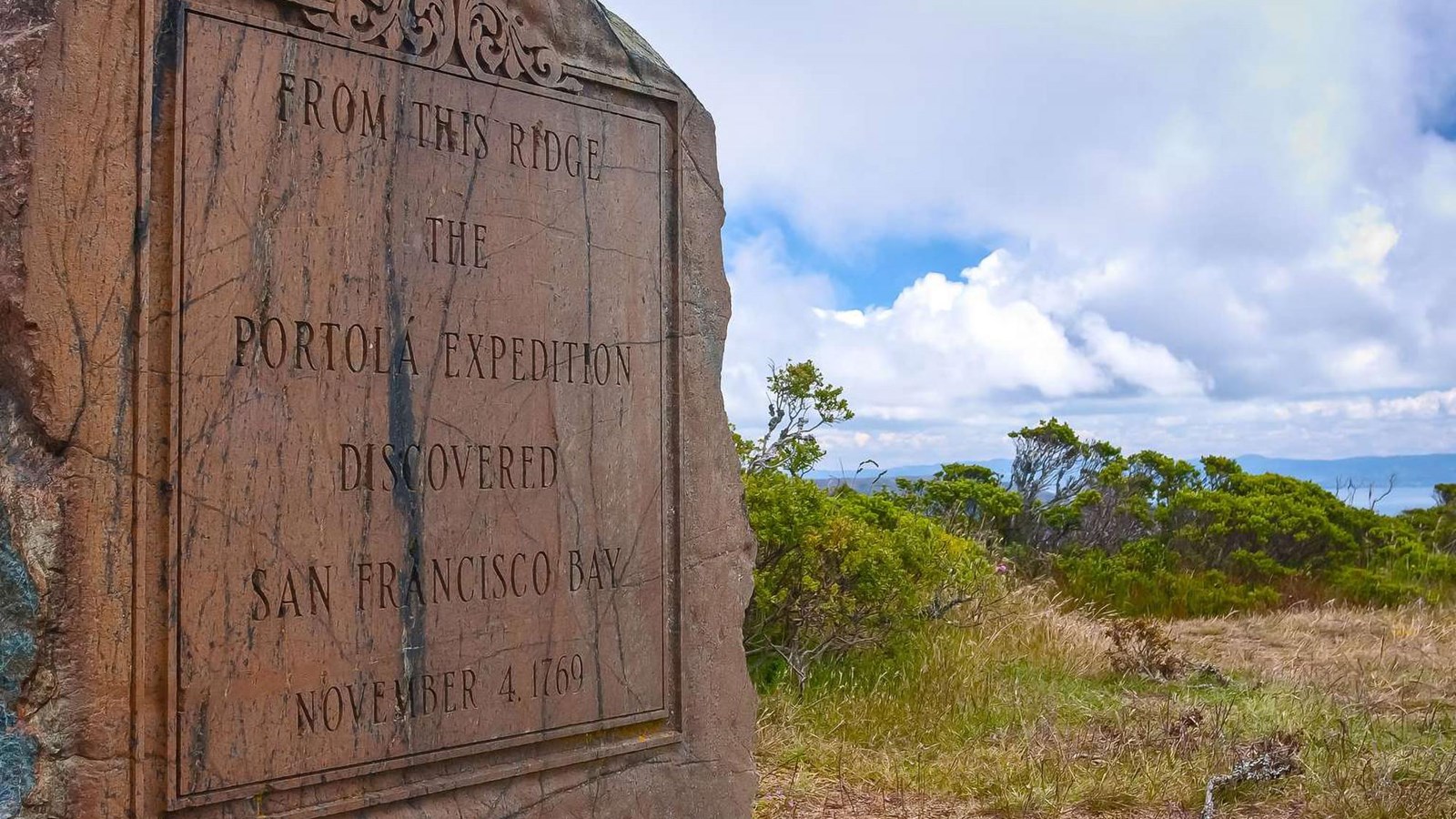Last updated: February 23, 2021
Place
Ohlone Portolá Heritage Site

Douglas Atmore
Scenic View/Photo Spot
On November 4, 1769, a group of weary, half-starved hikers climbed what is now known as Sweeney Ridge and became the first Europeans to see San Francisco Bay. This group was led by Spanish explorer Captain Juan Portolá.
Portolá, who's party of sixty men (with a caravan of 200 horses and mules for riding and the pack train), came from San Diego in search of Monterey Bay, but failed to recognize it from their overland approach.
The expedition members were hungry, lost, and sick after a six months' journey. They were welcomed and assisted by the local Native people along the way. The local Ramaytush Ohlone Aramai tribe of modern-day Pacifica accompanied the explorers to the top of Sweeney Ridge, where they viewed the expanse of the bay.
For millennia the Ohlone people had lived here and followed seasonal rounds of hunting, fishing, and managing the land for their needs. The Spanish "discovery" of San Francisco Bay would soon mean the loss of Ohlone lives, homelands and traditional ways when Spanish colonization started seven years later.
Captain Gaspar de Portolá's first sighting of San Francisco Bay has long been memorialized in the Bay Area. In 1987, Sweeney Ridge became part of Golden Gate National Recreation Area. Today there are two permanent monuments at the "discovery" site -- the first was installed in 1975, and the second eight years later.
The Impact of Spanish Colonization
In 1769, about 2,000 Ramaytush Ohlone people inhabited the San Francisco Peninsula, living in a network of ten independent tribes. Villages varied in size from 50 to 500 people. Everyone contributed to their family's well-being, but individuals could become, among other things, accomplished hunters, fishermen, bow or spear crafters, singers, shamans, healers, or basket makers. Headmen advised food gathering or seasonal relocation, and had the authority to resolve inter-tribal and intra-tribal conflicts.
This way of life was disrupted after Portoláv's "discovery" in 1769. Mission Dolores was founded 7 years later, and almost all of the people native to the San Francisco Peninsula had either joined the Mission or died by 1801. Conditions at the mission were poor, and life expectancy after baptism averaged four years. Despite generations of legalized servitude and tribal dismantling, Ohlone people continue to tell stories and preserve their cultural history here in the San Francisco Peninsula today.
Information sourced from Linda Yamane and Jonathan Cordero.
